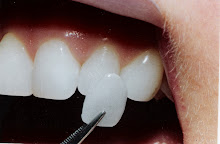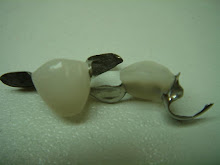
 Malocclusion may be seen as crooked, crowded, or protruding teeth. It may affect a person's appearance, speech, and/or ability to eat.
Malocclusion may be seen as crooked, crowded, or protruding teeth. It may affect a person's appearance, speech, and/or ability to eat.How to identify Malocclusion
Even though most people do not have perfect alignment of their teeth, for some, the misalignment causes other more noticeable problems. A dentist should be consulted if any of the following symptoms occur together with poor alignment of teeth, in order to effect a proper diagnosis and treatment of Malocclusion.
- pain arising from pressure to the jaw
- problems in speech and ability to eat
- breathing through the mouth
- difficulty in keeping the lips closed




















No comments:
Post a Comment